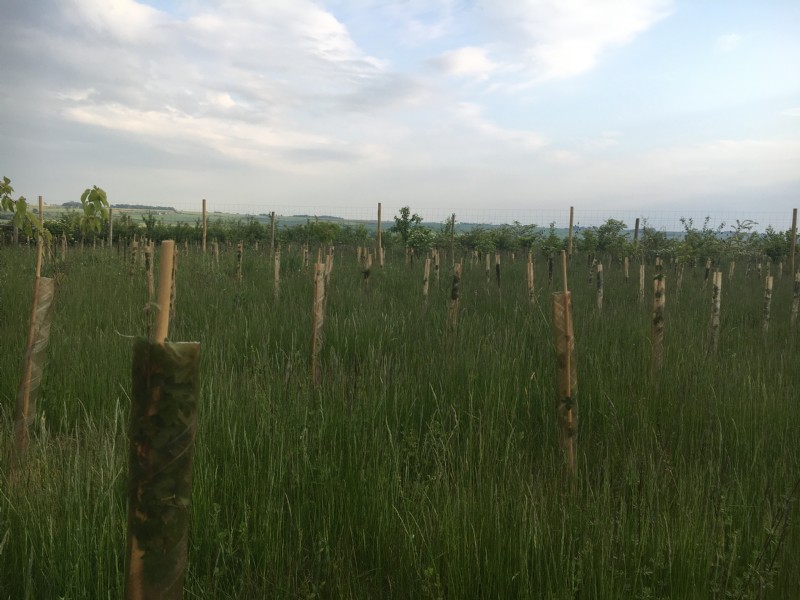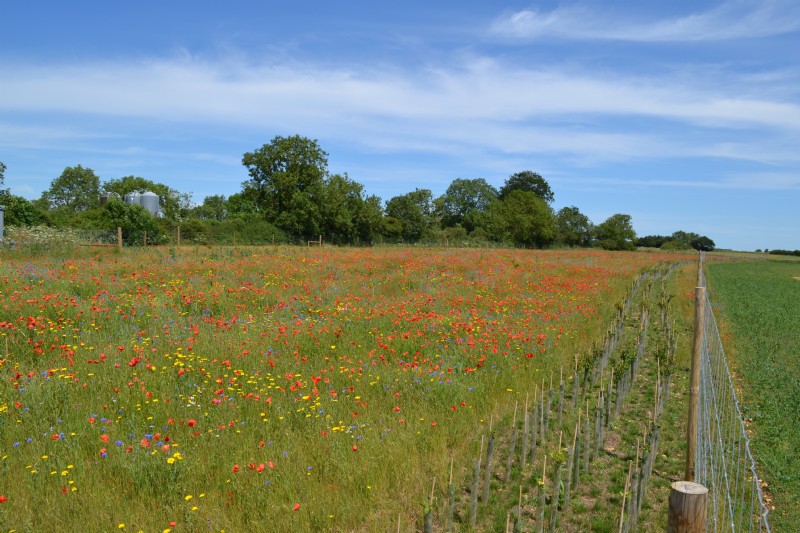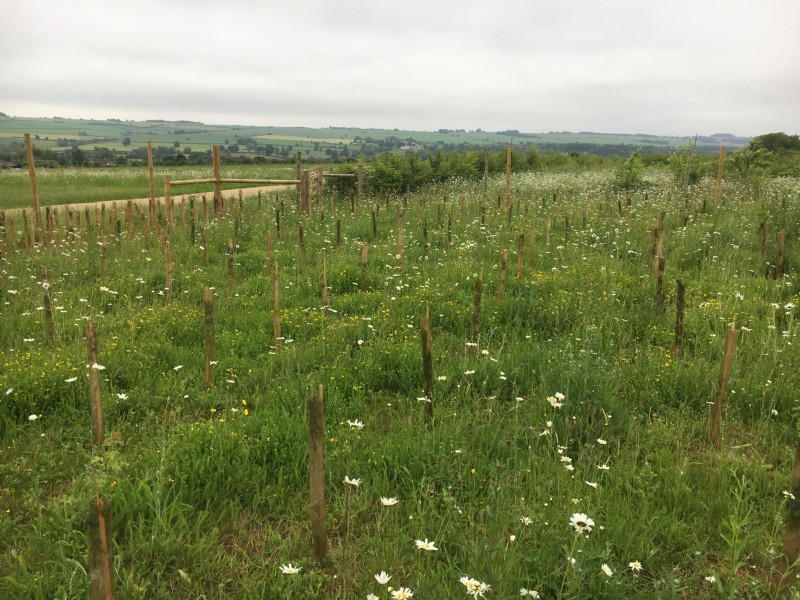







Planting an area of woodland is a great way to increase the variety of habitats on an area of land and we are seeing more woodland areas being planted on farmland through grant funding applications from Environmental Stewardship schemes.
While it can be tempting to rush to get trees in the ground over the winter period, especially as this is a long term project, with a delay of several years before a visual impact is seen, thought should be given to the ground cover into which trees are planted.
Some woodland projects may take place on existing, low growing, non competitive permanent pasture, which will provide a base or sward between each tree. However where trees are planted onto bare arable land, such as field headlands or narrow field corners, or if land has been contoured as part of a landscaping project, it is worth considering whether or not to establish a grass sward to act as a base to fill in the space between the new trees. Not only will this help to reduce weeds, it will add to the diversity if wildflowers are included in the seed mixture eg. mixtures such as (MIXWOOD or MIXFLO).
However, on high weed pressure sites, a grass only sward may be desirable, since this allows troublesome weeds like docks, nettles and creeping thistles to be controlled with a selective broadleaf herbicide.
The Species Rich Parkland Grassland mixture (MIXPGLM) is a useful, low growing grass only seed mixture. Alternatively there is a wide range of perennial grass and wildflower mixtures to suit a range of soil types and situations.
Case Study - Honeydale Farm
At Honeydale, the plan was to establish a shelterbelt of low to medium shrubby trees alongside the top end of four arable fields to reduce noise from the busy A road. The strip follows the northern boundary of the farm, a distance of approximately 850 metres in length by 30 metres wide and the trees would include hazel, laburnum, beech and dog rose.
During the first spring, six months before planting, the land was prepared and seeded with 2 separate seed mixtures. The trees were ordered to arrive during the forthcoming winter to ensure they were planted by the end of February.
The leading edge of the tree planting area was designed as a hedgerow, followed by 10 metres of open glade, with the bulk of the trees being planted in a broken pattern to provide areas of sunlight and shade in future years, with a denser stand of trees planted against the roadside boundary.
The area of thicker tree cover and less sunlight was planted with a shade tolerant perennial grass and wildflower mixture (MIXWOOD) while the areas receiving more sunlight and dappled shade were sown with a wider range of flowering species, including annual & perennial wildflowers and grasses (MIXFLO).
Both mixtures established well and were lightly topped during the summer to control some spring germinating annual weeds, such as fat hen, charlock and blackgrass. By the time the trees were planted in January the ground had a robust sward, which also helped to keep the tree planters’ boots clean!
As the weather warmed up in the spring following planting, a bright show of annuals and pioneer perennials could be seen,including poppy, cornflower and corn marigold, as well as wild carrot and ox-eye daisy.
Now, four years later, the trees are well established and we are seeing a real diversity of wildflowers, as the slower to establish species like field scabious and cowslip begin to appear. For the first couple of years, the area around each newly planted tree was kept clear to reduce competition and ensure the growth was not reduced. However this maintenance has finished now that the trees are growing away rapidly and robustly.
Date Posted: 24th May 2018



